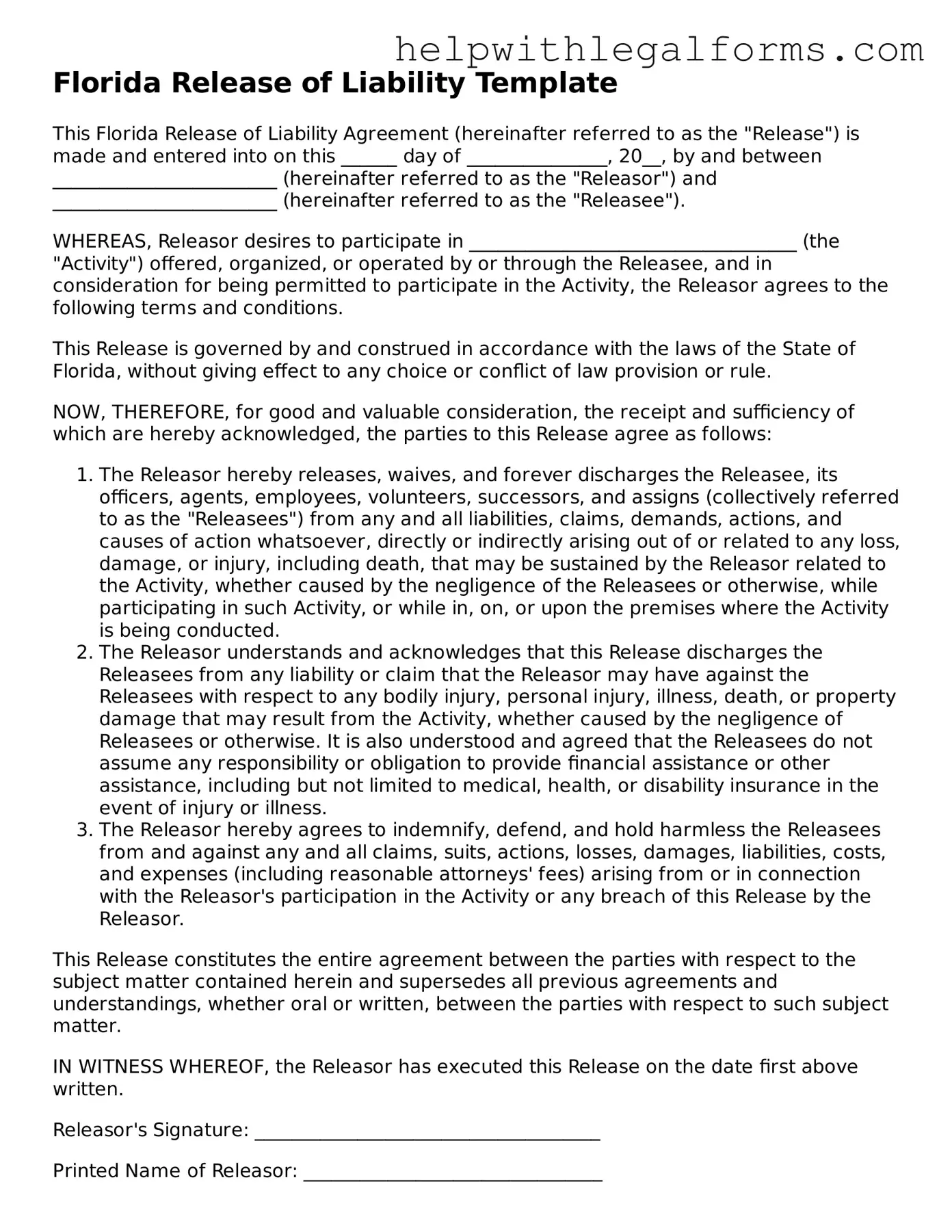What is a Florida Release of Liability Form?
A Florida Release of Liability Form is a legal document that individuals sign to waive their right to bring a legal claim against another party in the event of an accident or other incident causing harm. It is often used in situations where certain activities pose inherent risks, such as sports events, recreational activities, or in the case of property use. Signing this form typically releases the party requesting the waiver (such as a business or event organizer) from legal liability should the signer experience injury or damage as a result of their participation.
When should one use a Florida Release of Liability Form?
This form is appropriate whenever individuals are engaging in activities that carry a risk of harm or injury in Florida. This includes, but is not limited to, sports events, adventure sports, educational field trips, and any event where participants are asked to acknowledge the risks involved. Organizations or individuals offering these experiences or services might require participants to sign the form to help protect themselves from potentially costly litigation.
Is a Florida Release of Liability Form legally binding?
Yes, in Florida, a Release of Liability Form is generally considered legally binding if it is drafted clearly and if the signer has signed it voluntarily with a full understanding of its implications. However, its enforceability can be affected by circumstances such as fraud, misrepresentation, or if the waiver seeks to release liability for intentional acts of harm or gross negligence.
What information should be included in a Florida Release of Liability Form?
The form should clearly identify the parties involved, the activity being undertaken, and the specific risks associated with that activity. It should also clearly state that the signer understands and accepts these risks, thereby releasing the other party from liability. Additionally, the form should include the date of signing and be signed by all parties involved. Witnesses or notarization can further strengthen the form's enforceability.
Can minors sign a Florida Release of Liability Form?
Minors cannot legally sign a Release of Liability Form in Florida; instead, a parent or legal guardian must sign on their behalf. The form should explicitly state that the signer is the legal guardian and that they understand and accept the risks on behalf of the minor. This is crucial for activities directed towards children or where minors are involved.
How can one ensure the effectiveness of a Florida Release of Liability Form?
To maximize the effectiveness of the form, it should be written in clear, understandable language without using technical or legal jargon. It should explicitly detail the risks involved in the activity and the scope of the liability being waived. Having the document reviewed by a legal professional specializing in Florida law can also help ensure that it meets all legal requirements and effectively protects the party seeking to be released from liability.
What are the limitations of a Florida Release of Liability Form?
Even though a Florida Release of Liability Form can provide significant protection against liability, it does not grant immunity from all forms of legal action. For instance, it cannot shield a party from claims arising out of intentional wrongful acts or gross negligence. Moreover, the courts might not enforce a release if it’s deemed excessively broad or if there is evidence that the signer did not fully understand the implications. Thus, it is crucial to accurately represent the risks and conditions in straightforward language.
